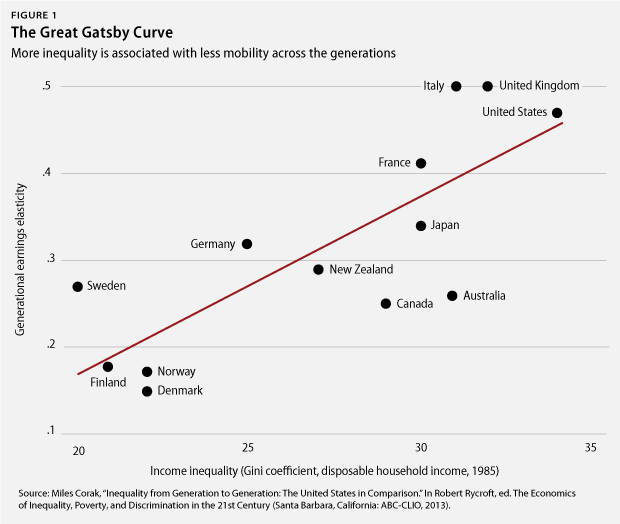
Bloomberg View: Rich and poor Americans are slowly but surely staking out separate lives. Increasingly, they have been moving to different communities, and more and more they are also marrying people of similar income and educational backgrounds. This is a phenomenon social scientists call assortative mating.
In 2005, 58 percent of wives with a high school diploma were married to men with the same amount of education, new research by economist Jeremy Greenwood of the University of Pennsylvania and three colleagues shows. In 1960, by contrast, only 42 percent of wives with high school diplomas were married to men with the same level of education.
More from Bloomberg View:
- Is Inequality Approaching a Tipping Point?
- Why Marriage Doesn’t End Poverty
The phenomenon is happening at the top of the education distribution, too. In 2005, 43 percent of wives with college degrees were married to men who also had college degrees. In 1960, the share was 33 percent.
What are the effects of this increased marital sorting? For one thing, it contributes to income inequality. If marriages occurred randomly across educational categories, Greenwood and his co-authors show, the Gini coefficient for household income in the U.S. in 2005 would decline to 0.34 from 0.43. (The coefficient falls as inequality decreases.) That would more than offset the entire increase in inequality that has occurred since the late 1960s. (This comparison is not entirely fair because even in the late 1960s, some assortative mating occurred. Nonetheless, it shows how large the effect is.)
Marital sorting also affects women’s participation in the workforce. Since the 1970s, the correlation between the wages of husband and wife has doubled, Christian Bredemeier and Falko Juessen of the University of Dortmund found. Over the same period, wives of high-income men have increased their working hours more than wives of low-income husbands have.
In the 1970s, wives with high-earning husbands tended to work fewer hours than other wives did. Assortative mating changed the pattern.
Finally, marital sorting may be having some effect on geographical mobility. Cross-state mobility rates have been falling in the U.S., research by Raven Molloy and Christopher Smith of the Federal Reserve and Abigail Wozniak of the University of Notre Dame has found.
In my role on the boards of nonprofits, I have seen many job offers declined because a move would be required, and the person’s spouse would have to leave behind a promising career. Because finding two good jobs in a new city is much harder than finding just one, is it possible that this “co-location problem” for dual-earning couples with increasingly similar incomes and educational backgrounds is discouraging mobility?
Well-educated couples tend to live in large cities because it increases the chance that both spouses can find an adequate job, research by Dora Costa of the Massachusetts Institute of Technology and Matthew Kahn of the University of California at Los Angeles suggests. Another piece of evidence comes from the cross-state mobility rates themselves. Since the 1980s, they have fallen almost by half among dual-earning couples, while the rate for single (or no) earners has fallen by only a third. Yet Molloy finds some evidence that these differential trends have had only a modest effect on total mobility rates (after other factors are taken into account).
In any case, assortative mating indicates why trying to bridge the increasing divides between rich and poor in the U.S. is so complicated and difficult. If income inequality is being driven in part by changes in marriage patterns, what can anyone do about that?
(Peter Orszag is vice chairman of corporate and investment banking and chairman of the financial strategy and solutions group at Citigroup Inc. and a former director of the Office of Management and Budget in the Obama administration.)
To contact the writer of this article: Peter Orszag at orszagbloomberg@gmail.com.
To contact the editor responsible for this article: Mary Duenwald at mduenwald@bloomberg.net.
